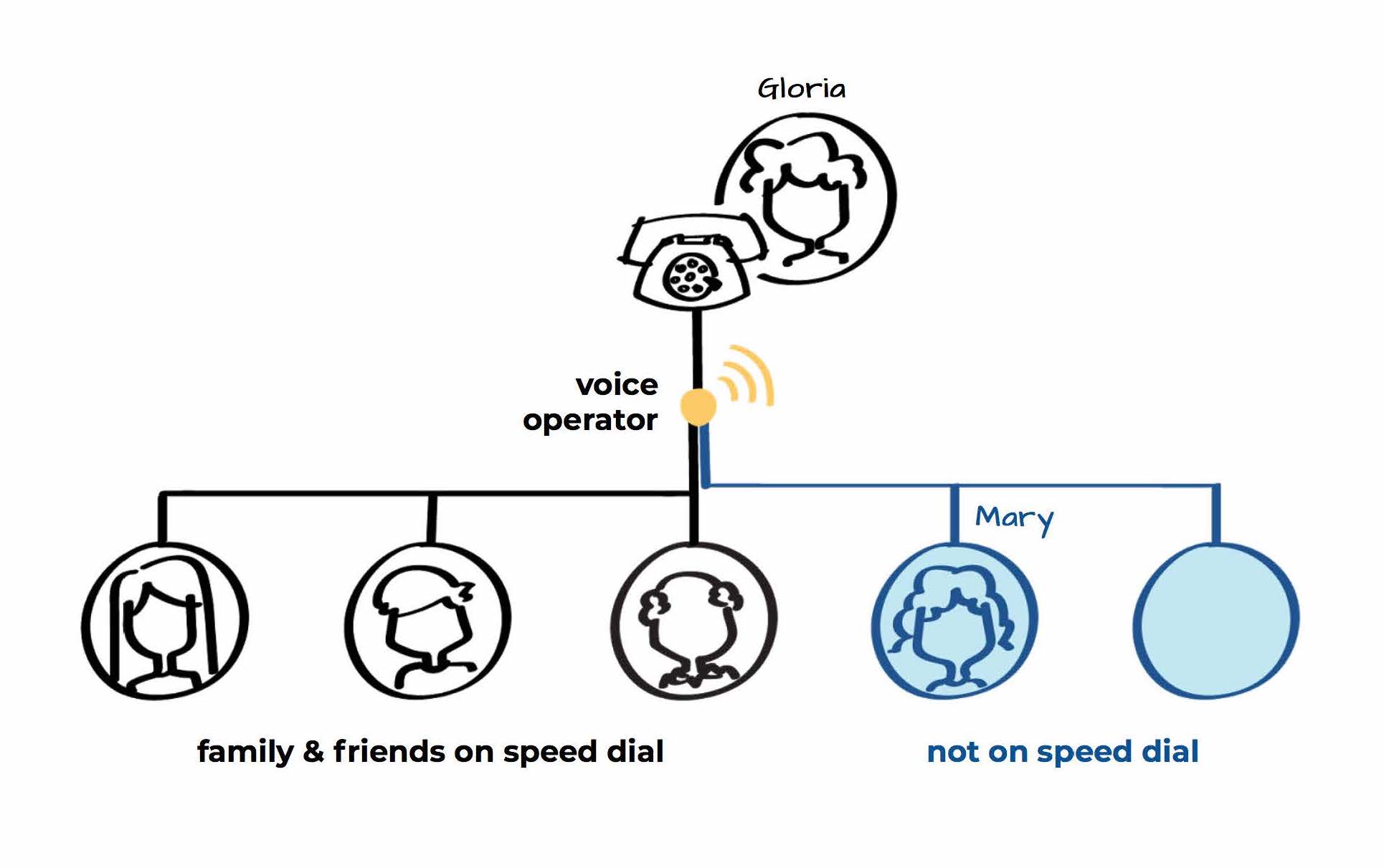Leave A Message
Leave a Message a.k.a. The Phone Project was created by Javiera Arenas, Paula Kawakami Ishihara, and Alik Mikaelian to support people living with Alzheimer's disease, as well as those who stand by and care for people with Alzheimer's.
̌

Alzheimer’s disease is an irreversible, progressive brain disorder that slowly affects memory, thinking skills and, eventually, the ability to carry out the simplest tasks. And, memories that Alzheimer’s patients hold onto the longest tend to be from much earlier in their lives. Patients often desire to talk to people who are not here anymore, many times feeling like they were kids again and wanting to talk to their parents.
In these moments caregivers usually respond by 1) validating patients’ feelings and “playing along” or 2) they correct them.
With this typical exchange in mind, we designed a phone that offers access— a phone that allows patients to connect with people, even those who may no longer be living. This is a portal that expands our perception of reality. Considering that this illness comes with enormous tension and change, we designed a device that gives permission to embrace new ways of being.

This is Gloria. With this phone, she can leave a message for her daughter or son by speaking into the voice recognition feature; the phone will access her contacts on speed dial. But she can also reach someone who is not around anymore, like her sister Mary. To leave a message for Mary, the phone will recognize that she is not registered in the speed dial function and will automatically prompt Gloria to leave a message.
Voice recognition is easily programmed by the caregiver, registering names the patient will be able to call.

Our project goal is to expand the notion of what is real and non-real, shift mindsets and support family connections. Our design doesn’t distinguish among this reality spectrum, it makes it acceptable to be on either side.
As the disease progresses, non lucid moments occur more frequently than lucid ones. Clinically speaking, the illness will always advance linearly, but our research taught us that patients have good and bad days. This pattern is irregular and independent of the disease’s stage, and results in caregivers’ difficulty with acceptance.
Our design intervention invites family mindset shifts earlier in the disease timeline, bringing about more quality, making these transitions smoother, and challenging the stigma around the cognitively impaired.

Through a process of literature review and interviews with caregivers of Alzheimer’s patients, we identified three problem areas experienced by both patients and caregivers that we aimed to address through Leave a Message. These areas of concern were: denial, lingering, and isolation.
Denial is very common among caregivers - although the disease is irreversible family members tend to be uncomfortable exploring new territories of their relationship with patients. For patients, we discovered issues of lingering feelings associated with the disease - even though Alzheimer’s patients might forget an event, their feelings related to the event stay with them. Isolation affects both patients and caregivers - in early stages of the disease, patients tend to hide symptoms, resulting in feelings of being alone; similarly, caregivers who do not know how to engage with their loved ones who suffer from Alzheimer’s begin to withdraw.
With these problem areas in mind, we developed a set of design principles that informed the creation of the phone and its features. Our principles were: Fostering intentional attention, Connections among the disconnected, and Portal to non-judgmental spaces.








